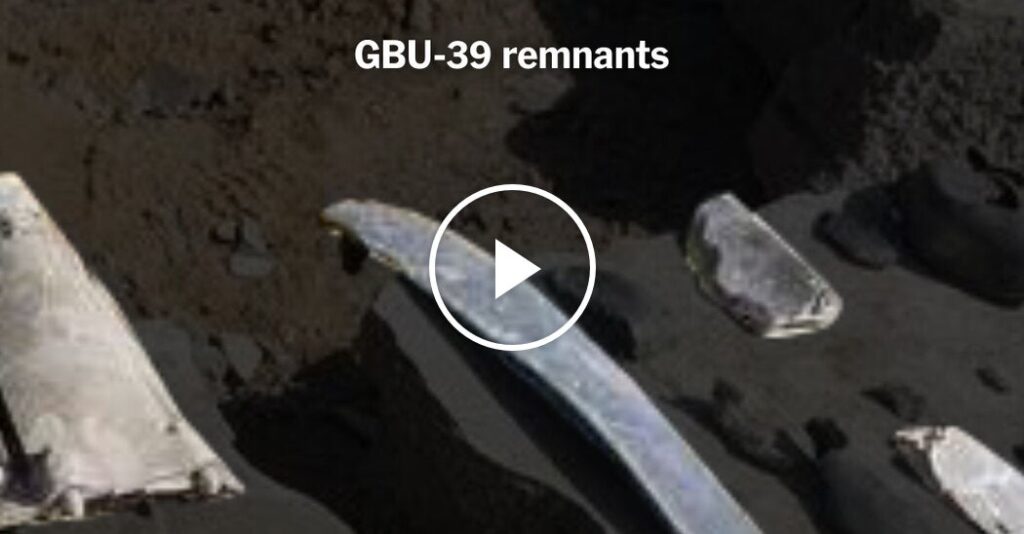This detention center in Yemen holding African migrants was hit by an airstrike on April 28. It’s located in Saada in the country’s north. At least 68 of the migrants were killed, according to the Houthis, an Iranian-backed militant group that controls northern Yemen. The Times could not independently verify the building was a migrant center, or that the dead and injured were all migrants. The Houthis said it was an American strike. The U.S. said it was aware of the strike and civilian casualties, but hasn’t confirmed or denied involvement in the attack. The Times analyzed satellite imagery, photos and videos of the strikes’ aftermath and spoke to weapons experts. We found that at least three U.S.-made GBU-39 bombs were used in the attack, suggesting that the U.S. likely carried out the bombing. The munitions destroyed the 4,800-square-foot building, where Houthi-run media said 115 migrants were held. The Trump administration has carried out an intense bombing campaign against the Houthis since mid-March. The stated aim is to pressure the Houthis to halt their attacks on Israel and international shipping vessels in the Red Sea, where they’ve caused major trade disruptions. Independent monitors say civilian casualties are increasing, and U.S. officials are providing few details about the strikes or their targets. While Israel has GBU-39s, there is no indication they were bombing Yemen at the time. The situation within Yemen is also opaque. The Houthis are skilled at propaganda and have restricted independent journalists and the public from sharing videos and photos online. From the April 28 strike in Saada, the Houthis released footage that showed bomb craters at the site, which weapons experts said were consistent with a GBU-39 explosion, and photos show debris from a weapon at the site. Among the debris is the guidance system in the tail of a GBU-39, a 250-pound bomb that is designed and manufactured in the United States. The Yemen Executive Mine Action Center, a demining organization, was at the scene, searching for munition remnants. The group is tied to the Houthi-led government and has been previously funded by the United Nations. They shared other GBU-39 parts that were laid out near the wrecked detention center. In this photo, two parts that hold the bomb’s fuze are visible, indicating that at least two GBU-39s exploded at the site. In one of the craters, they found a circular object embedded underground, which is the base of a fuze well with a bolt. Weapons experts told The Times the fuze well is part of a GBU-39 bomb. Experts said the scale of the destruction also shows that multiple munitions were used. This wasn’t the first time the detention center in Saada had been hit in recent years. Scores of people were killed in January 2022 when a Saudi-led military coalition supported by the U.S. launched an airstrike on another building at the center, about 100 yards away from the building struck on April 28. In a statement to The Times, a defense official said, “U.S. Central Command is aware of the claims of civilian casualties related to the U.S. strikes in Yemen, and we take those claims very seriously. We are currently conducting our battle damage assessment and inquiry into those claims.” They did not answer specific questions on whether they struck the detention facility, and if so, what their target was.
Visual Analysis Shows U.S. Likely Bombed Yemen Migrant Detention Center
Keep Reading
Add A Comment
SITE LINKS
Subscribe to Updates
Get the latest politics, business, sports, lifestyle, and many more news directly to your inbox.
© 2025 Excellent Newspaper. All Rights Reserved.



